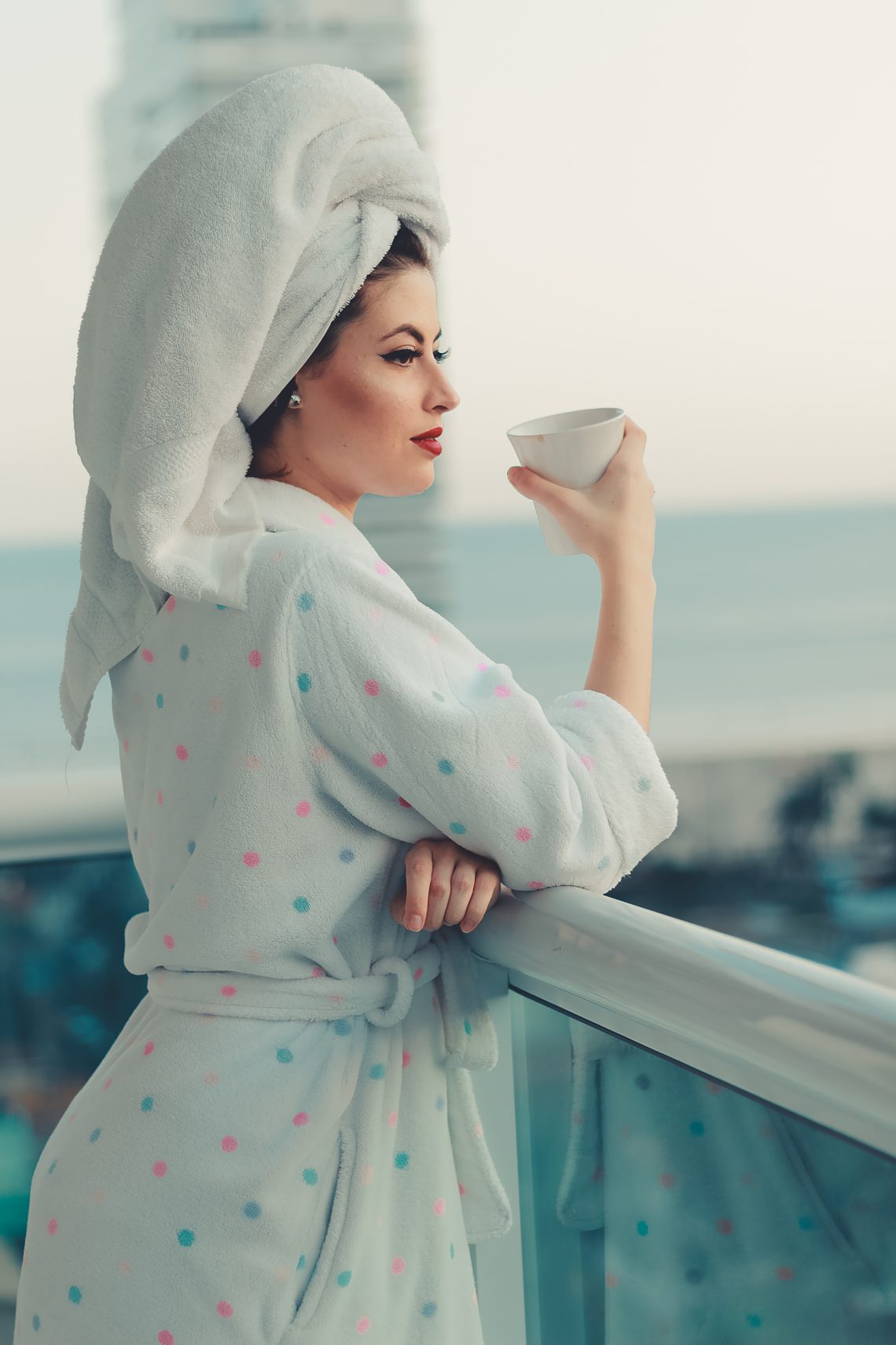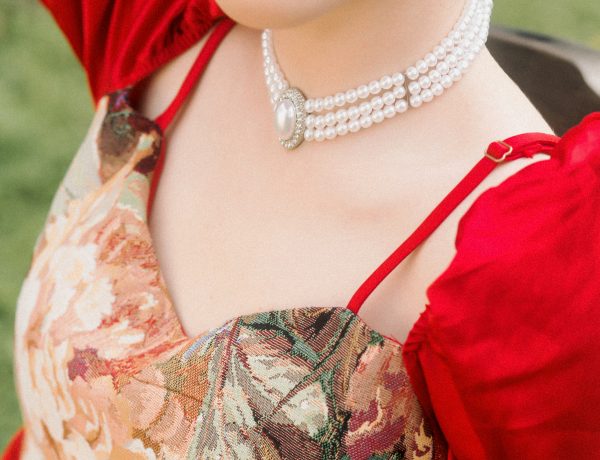Looking for the perfect bathrobe to enhance your relaxation? The choice of fabric is key to creating a truly indulgent post-shower or lounging experience. From the luxurious cocoon of terry cloth to the delicate allure of silk, bathrobe fabrics offer a wide range of qualities to suit your preferences and needs. Journey through the world of bathrobe materials, exploring the plush touch of velour, the breathable charm of linen, the cozy warmth of fleece, and more. Discover the ideal fabric to envelop you in comfort and elevate your moments of repose.
Cotton
Cotton is celebrated for its natural, breathable properties. This fabric absorbs moisture, making it an excellent choice for a bathrobe to slip into after a shower or bath. From Turkish cotton renowned for its long fibers and superior absorbency, to Supima cotton known for its softness and durability, there’s a variety of cotton types to consider. Cotton robes are easy to clean and maintain, adding to their appeal. However, they may lack the plush, luxurious feel of some other bathrobe materials, offering a more practical than pampering experience.
Microfiber
Microfiber is a synthetic material known for its exceptional softness and durability. Often compared to silk for its smooth texture, microfiber bathrobes offer a touch of luxury and comfort. This fabric is quick-drying and highly absorbent, making it a popular choice for spa or pool robes. Microfiber is also lightweight and relatively thin, ensuring that robes made from this material provide warmth without the bulk. Despite its many advantages, some individuals might find microfiber less breathable than natural fabrics like cotton. Nevertheless, if you’re seeking a bathrobe that combines luxury with practicality, a microfiber robe could be an excellent choice.
Silk
Silk is synonymous with luxury and opulence, making it a high-end choice for bathrobes. It’s incredibly soft and smooth, providing a cooling sensation against the skin that is particularly appreciated in warmer climates or seasons. A silk bathrobe can elevate your lounging experience to a spa-like level, adding a touch of elegance to your relaxation routine. However, silk robes require careful handling and maintenance; they’re not typically machine-washable and may require dry cleaning. Additionally, while silk robes excel in terms of comfort and luxury, they are not as absorbent as cotton or microfiber options. Therefore, a silk bathrobe might be best suited for lounging rather than post-shower use.
Fleece
Fleece is a synthetic fabric celebrated for its exceptional warmth and softness, making it an ideal material for cozy, winter bathrobes. With its high insulation properties, a fleece bathrobe can keep you toasty warm on cold mornings or chilly evenings. This lightweight material is also fast-drying, adding to its appeal for bathrobe use. While it does provide some degree of moisture absorption, it may not be as absorbent as cotton or microfiber. Nevertheless, for those seeking a bathrobe that delivers comfort, warmth, and softness, a fleece robe is a top contender. Do note that fleece can sometimes generate static electricity and may not be as breathable as natural fabrics.
Linen
 Linen is an all-natural material, revered for centuries for its breathability and durability. When it comes to bathrobes, linen offers a lightweight, airy feel that is particularly appealing in warmer climates or seasons. Linen bathrobes are highly absorbent and quick-drying, qualities that make them a practical choice for post-bath or pool use. Notably, linen fabric gets softer and more comfortable with each wash, adding to its appeal over time. However, linen robes may lack the plush, indulgent feel of materials like fleece or terrycloth. They may also wrinkle more easily than other fabrics, which could necessitate more frequent ironing. Despite this, if you’re seeking a bathrobe that combines practicality with eco-friendliness, a linen robe could be your ideal choice.
Linen is an all-natural material, revered for centuries for its breathability and durability. When it comes to bathrobes, linen offers a lightweight, airy feel that is particularly appealing in warmer climates or seasons. Linen bathrobes are highly absorbent and quick-drying, qualities that make them a practical choice for post-bath or pool use. Notably, linen fabric gets softer and more comfortable with each wash, adding to its appeal over time. However, linen robes may lack the plush, indulgent feel of materials like fleece or terrycloth. They may also wrinkle more easily than other fabrics, which could necessitate more frequent ironing. Despite this, if you’re seeking a bathrobe that combines practicality with eco-friendliness, a linen robe could be your ideal choice.
Modal
Modal is a type of rayon, a semi-synthetic cellulose fiber made by spinning reconstituted cellulose, in this case, often from beech trees. Known for its softness, smoothness, and breathability, the modal makes for a luxurious bathrobe material. Modal bathrobes are lightweight yet warm, and they are also known for their high moisture-absorbing qualities, making them a great choice for post-shower use. Even better, this fabric retains its size and shape even after multiple washes, offering longevity. However, while modal bathrobes deliver high comfort and practicality, they may not offer the plushness of materials like fleece or terrycloth. Despite this, if you are seeking a bathrobe that balances luxury with durability and care ease, a modal bathrobe could be a superb choice.
Bamboo
Bamboo is a natural, renewable resource that has gained popularity in recent years due to its sustainability and environmental friendliness. When it comes to bathrobes, the bamboo fabric offers a myriad of appealing qualities. Known for its silky soft texture, bamboo bathrobes provide a luxurious feel that rivals high-end fabrics like silk. They are also breathable and highly absorbent, making them great for post-shower use. Bamboo has natural anti-bacterial properties, keeping your bathrobe fresh for longer. Moreover, this fabric is known for its heat-regulating abilities, keeping you cool during hot weather and warm in the cold. On the downside, bamboo robes might require extra care in washing to maintain their softness and durability. But if you desire a bathrobe that combines luxury with eco-consciousness, a bamboo robe could be the perfect fit for you.
Polyester
Polyester, a synthetic material, is a widely-used fabric choice for bathrobes due to its durability and cost-effectiveness. Polyester bathrobes are known for their ability to retain heat, providing a warm and cozy feel – a characteristic highly appreciated during colder seasons. This fabric is remarkably resilient, maintaining its shape and color even after numerous laundry cycles, thus ensuring the longevity of your bathrobe. Polyester bathrobes are also relatively lightweight and quick-drying, adding to their practicality. However, compared to natural materials, polyester may not offer the same level of breathability or absorbency, and some people may find it less comfortable against the skin. Despite these potential drawbacks, if you’re on the lookout for a bathrobe that is easy to maintain and offers good value for money, a polyester robe could be an excellent choice.
Each material and fabric has its own set of characteristics, so your choice should be based on factors such as your climate, personal preferences, intended use, and desired level of comfort. Additionally, consider any sensitivities or allergies you may have when selecting a bathrobe material.
Read more lifestyle articles at ClichéMag.com
Images provided by Deposit Photos, BingAI, Adobe Stock, Unsplash, Pexels, Pixabay & Creative Commons



